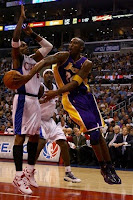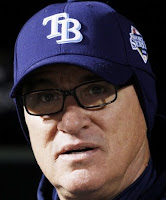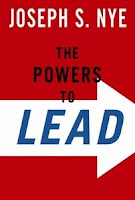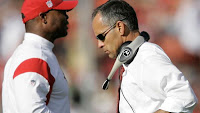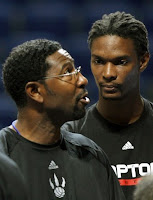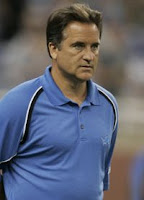
Many thanks to a good friend in Minneapolis for passing along these terrific notes from the book "
Selling the Invisible" by
Harry Beckwith (who hails from Minneapolis and is pictured here):
-- Life is like high school: Why do so many people believe that sheer technical competence ensures success? Odds are, they learned that in college.
College and graduate school teach us that technical competence is all. None of these institutions reward human qualities that tests cannot measure -- and this is not to suggest they should.
But college graduates learn something: Knowing your stuff is what counts. This lesson of college conflicts with the lesson we learned immediately before it. Children and teenagers learn to value well-roundedness and traits that are likeable.
A high school student in the 1960s and 1970s could learn that it was an honor to "make" National Honor Society, but an even greater one to get into was Key Club, which stressed citizenship, integrity, and other issues of character.
College, then, seduces us with the notion that real life will be an oasis where sheer talent is what counts. This misleading notion is what actress Meryl Streep was reflecting on when a lucky interviewer got a moment with her.
"I really did think that life would be like college," Streep told the interviewer, "but it isn't. Life is like high school."
Life is like high school. Those things that made you popular start mattering again. Hate it, fight it, march in the streets against it, but it is true.
-- The reality of planning: [When planning], start with three ideas: First, accept the limitations of planning. Don't assume that putting eight smart people in a room with good data will automatically produce something. Ford put eight smart planners in a room, and out popped the
Edsel.
-- Tactics drive strategy: In successful organizations, tactics drive strategy as much or more than strategy drives tactics. As [Guy]
Kawasaki expresses it, "Lead, take a shot, listen, respond, lead again."
-- Execute passionately: If you execute your idea without passion, others will think you lack confidence in the idea, and they will lose confidence, too. Execute passionately. Marginal tactics executed passionately almost always will outperform brilliant tactics executed marginally.
-- Keep moving: "If a shark does not move, it cannot breathe. And it dies. Moving organizations tend to keep moving. Dormant ones tend to run out of air and die. To worsen this problem, not moving rarely causes any immediate pain to an organization. This encourages even more waiting.
Not moving begets more not-moving. By the time the delayed consequences of all this not-moving occur, it is often too late to correct them.
Act like a shark. Keep moving.
-- Good often beats perfect: You easily can get stalled in the shift from strategy to tactics because you are paralyzed by your desire for excellence. Here's a good way to rank The Best Plans: (a) Very good; (b) Good; (c) Best; (d) Not good; (e) Truly god-awful.
Best ranks lower than good? Why?
Because getting to best usually gets complicated. The planning process tends to attract perfectionists. Something paralyzes these people: Their fear that executing the plan will show that the plan was not perfect. So rather than risk being found out, these people do nothing. Too often, the path to perfection leads to procrastination.
Don't let perfect ruin good.
-- Failing isn't failure: Few phobias are more widespread than the fear of failure. But what is failure?
The legendary golfer
Ben Hogan said that in 18 holes, he usually hit only two or three balls exactly as he'd planned.
There's little point in killing an idea by saying it might fail. Any idea might fail. If you're doing anything worthwhile at all, you'll suffer a dozen failures.
Start failing so you can start succeeding.
-- The fallacy of expertise: What is an expert? Is an expert anything more than someone with lots of data and experience? The value of an expert's experience is dubious [because] every experience in life is unique. Anytime that we apply the apparent lessons of one experience to another one, we tend to assume that the two experiences are essentially identical.
They never are.
Don't look to experts for all your answers. There are no answers, only informed opinions.
-- A note about common sense: Unfortunately, common sense is not that common. Whenever it does show up, common sense helps in any discipline. But common sense will only get you so far. For inspiring results, you'll need inspiration.
 Had a chance to go back and watch several opening-night games that I'd Tivo'd, including the Cavs-Celtics game, which BOS won.
Had a chance to go back and watch several opening-night games that I'd Tivo'd, including the Cavs-Celtics game, which BOS won.


